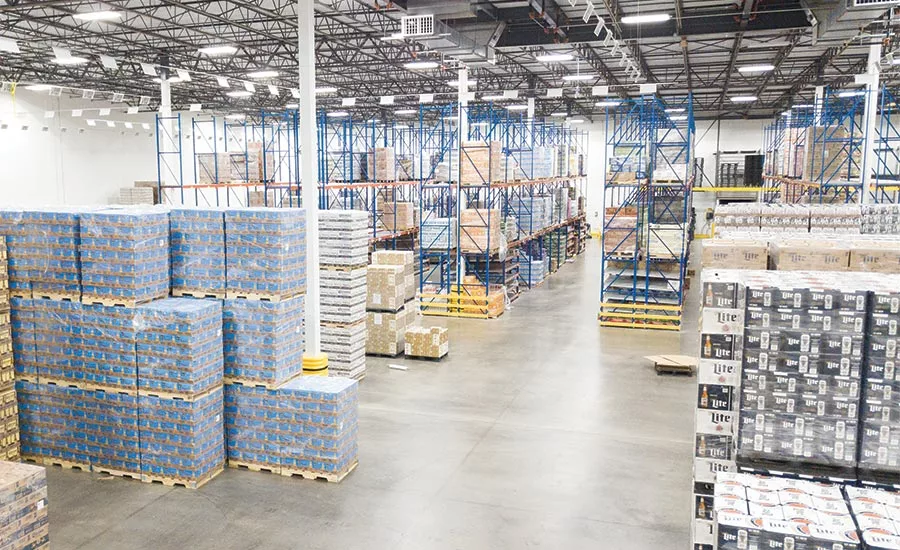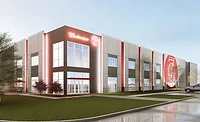Operations
New facility builds address beverage operations growing pains
Architectural-lead design balances costs and function

In the 2008 holiday special “A Miser Brothers Christmas,” Tinsel, the lead elf, designs a Super Sleigh to help Santa Claus with his big flight. However, this capital expenditure has not been smooth sailing as an outside force looks to sabotage Santa’s holiday ride. Although beverage operations do not have to worry about mythical creatures when planning their capital expenditures, a lot of work goes into making sure the process is a rousing success.
Prior to the coronavirus pandemic, the beverage market had seen a lot of mergers and acquisitions among beverage wholesalers as well as continuous SKU-proliferation from beverage manufacturers. Because of these trends, many operations have felt the “growing pains” that have accompanied these trends and are turning to new facility builds to ease the “pain.”
“For distributors, investing in a new facility the key factor are consolidation. Their existing facility is currently at maximum capacity and they have the ability to pursue automation and changing fleet from side bay to rear loaders,” says Patrick Holleran, vice president at St. Louis-based HDA Architects. “For brewers, the key factors are expanding capacity for increased sales, a destination for tours, future tap room and exterior patio to gather.”
Although the current state of the U.S. economy will make long-term prognostication efforts more challenging, assessing future trends and its impact on sales is vital when planning a new facility build, experts note.
“Measuring existing volume, projecting 10-year growth of existing brands and factoring in future SKUs such as seltzer, wine, soda and water,” Holleran says. “The more complex the business, the easier it is to evaluate automation ROI (return on investment).”
Lloyd Snyder, senior vice president at Portland, Maine-based Woodard & Curran, adds that new geographic locations, and improvements to labor pools and product distribution have been drivers for new facility projects.
“The labor shortages we are seeing across the country is making the war for talent and real critical deciding factor in locating new facilities,” Snyder says. “We also see aging infrastructure and a hostile, non-business friendly regulatory environment being a driving factor. Water, wastewater and power are important factors to consider. These are infrastructure costs that can add significant cost to the construction of a new facility.
“To bring these ‘outside services’ to your new facility, significant planning and negotiations are key,” he continues. “Many companies are installing pre-treatment wastewater facilities to decrease pressure on public treatment plants.”
Trusted source
Once a beverage operation has decided to invest in a new facility build, decision makers then must decide how they want to go about planning and executing the design and construction. Experts highlight that enlisting an architectural-lead design is a recipe for success.
“We believe architectural-lead design build results in a better project for the client,” Snyder says. “Focus is balancing functionality and costs. Many [design-build] firms have added cost-estimating professionals that aid in more accurate budgeting for projects. [Architecture-engineering] firms will develop a highly functional, optimized and efficient plant. This is what is needed for long-term success.”
HDA Architects’ Holleran also touts the benefits that beverage operations can realize with architect-lead design builds.
“Entrusting a project to our architect-led design/build team limits the time and effort required of the client and the range of entities necessary to contact with,” he says. “It allows busy owners to focus their core activities, and to rest assured that the project is being handled in the most professional way possible while reducing their risk and exposure. Tighter controls over all aspects of the project are possible, from the preservation of the design intention to a close adherence to a budget and construction schedule.”
The following are some detailed benefits the Holleran has identified of a design-build project:
- Earlier and more accurate budgeting and cost control.
- Construction costs can be fixed or a guaranteed maximum price instituted after design.
- Earlier and more accurate scheduling and shortened design and construction time.
- Team-based collaboration with a non-confrontational relationship between architects and contractors.
- Continuity throughout the process, resulting in better preservation of the design intent.
- Quality control with the architect monitoring the construction while representing the owner’s interest.
- More direct communication and fewer involved parties.
- Complete integration of design, construction and technical infrastructure.
As new advancements develop, architecture firms are finding more ways to help improve the process of new facility builds for beverage operations.
“Process and utility skid systems are reducing the space constraints, reducing construction costs and reducing schedules,” Woodard & Curran’s Snyder says. “We see this as a valuable way to achieve vertical startup curves for process systems and also ensures the client gets a consistent process installation both from a quality and safety standpoint.
“Virtual reality is an interesting innovation that is creating a more dynamic interactive experience for training, design development and operation simulations,” he continues. “We can see this being used as a tool for enhancing the design experience that allows our clients to ‘walk through’ the facility and see areas that can be improved.”
Looking for a reprint of this article?
From high-res PDFs to custom plaques, order your copy today!






